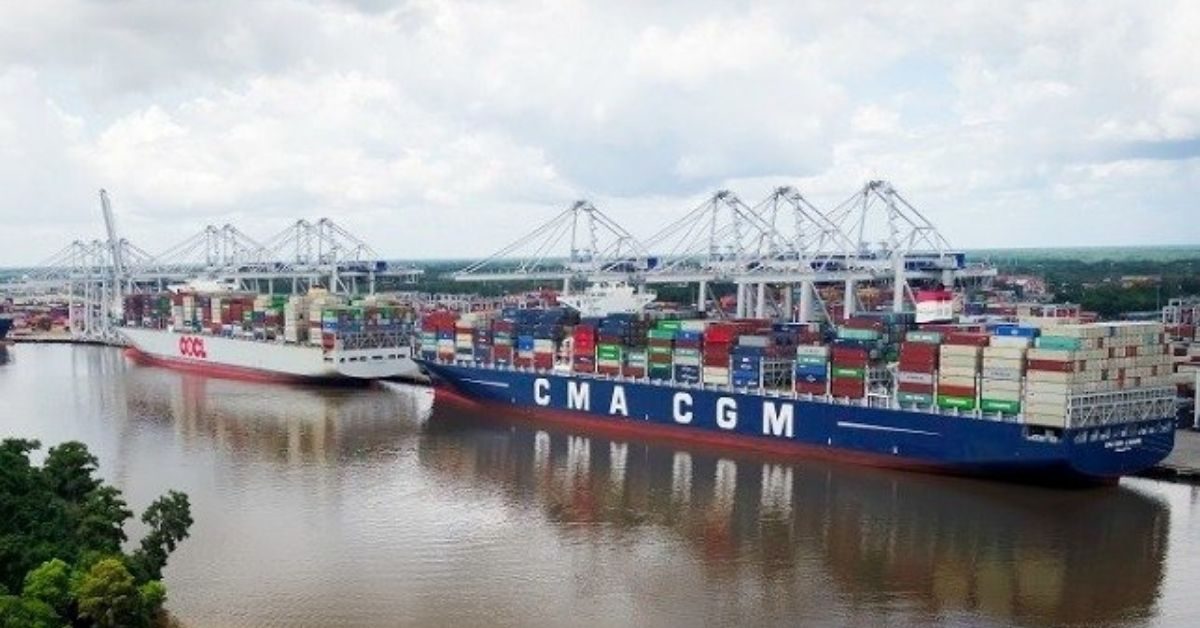The Georgia Ports Authority is reporting an initial success at clearing some of the containership congestion at the Port of Savannah while the port also recorded its first-ever month handling more than 500,000 TEU. The U.S. Department of Transportation is supplying some of the first aid after the passage of the new Biden Administration infrastructure bill while Georgia is also undertaking projects to expand capacity at the terminal, storage, and the intermodal rail link.
The first of the large infrastructure projects to be completed is the expansion of the intermodal link. Governor Brian Kemp announced today the completion of a second set of nine new rail tracks for a total of 18 tracks at its Mason Mega Rail Terminal. The expansion immediately increases intermodal capacity to and from the Port of Savannah by more than 30 percent.
“The massive new Mason Mega Rail yard is coming online at the perfect time to help address the influx of cargo crossing the docks at the Port of Savannah,” said Governor Kemp. “The added rail capacity, along with new container storage on and off terminal, are already serving as important tools to resolve the supply chain issues for Georgia and the nation.”
The White House also announced this week that the U.S. Department of Transportation would further support the Port of Savannah with over $8 million to help with the opening of five “pop-up” container yards in Georgia and North Carolina. These yards, accessible by rail and truck, can accommodate more than 500,000 containers over the course of a year or the equivalent of 27 mega containerships. As soon as Monday, the GPA says it will open its first off-terminal overflow container yard less than five miles from the port.
“We’re setting up multiple inland locations that will be connected via truck or rail to the Port of Savannah,” said GPA Executive Director Griff Lynch. “We’re working with both CSX and Norfolk Southern to provide inland and off-dock locations to move these long-dwell imports off the facility. We think this will make a huge difference for both importers and exporters as we clear out our yard.”
The new yards will be used to create space at the container terminal by moving long-dwell containers to inland locations. Briefing Georgia lawmakers this week Len Beckman, the manager of governmental affairs for the GPA reported that they currently had added as many as 83,000 containers waiting to be shipped or hauled inland from the Port of Savannah, which he said was 22,000 above the port’s preferred maximum.
“This is the relief we needed in order to regain terminal efficiency and speed up vessel service,” said GPA Board Chairman Joel Wooten. “By reclaiming this space on terminal, we can begin to reduce the backlog of vessels at anchor.”
The Port of Savannah is already reporting some progress in reducing the backlog. Since September 1, the GPA has seen a 60 percent reduction in the amount of time containers are on terminal, as major retailers have begun moving cargo off-terminal at a faster pace. The Port of Savannah says that it has reduced the number of ships waiting at anchor by 40 percent. In October, they had 27 containerships at anchor, which has been brought down to around or under 20 currently. However, some of the reduction might also be due to some of the major carriers’ decisions to skip calls at Savannah in favor of other regional ports.
Like other major ports, Savannah says that some of the issues are beyond the port’s influence. They cited the nationwide shortage of truck drivers to move containers. Some experts are now saying that they believe the U.S. is short at least 80,000 long-haul drivers.
Savannah also has several other projects underway to expand its capacity. Between December 2021 and March 2022, they will add a further capacity for 820,000 TEU and 1.2 million by July 2022. They are also adding a new berth able to accommodate vessels with a capacity of up to 16,000 TEU.
Source : Maritime-Executive






